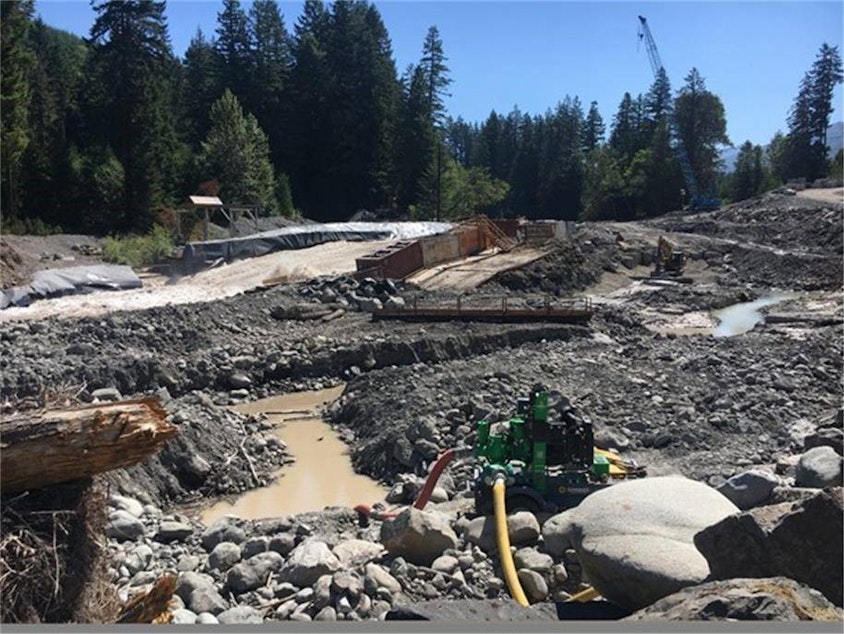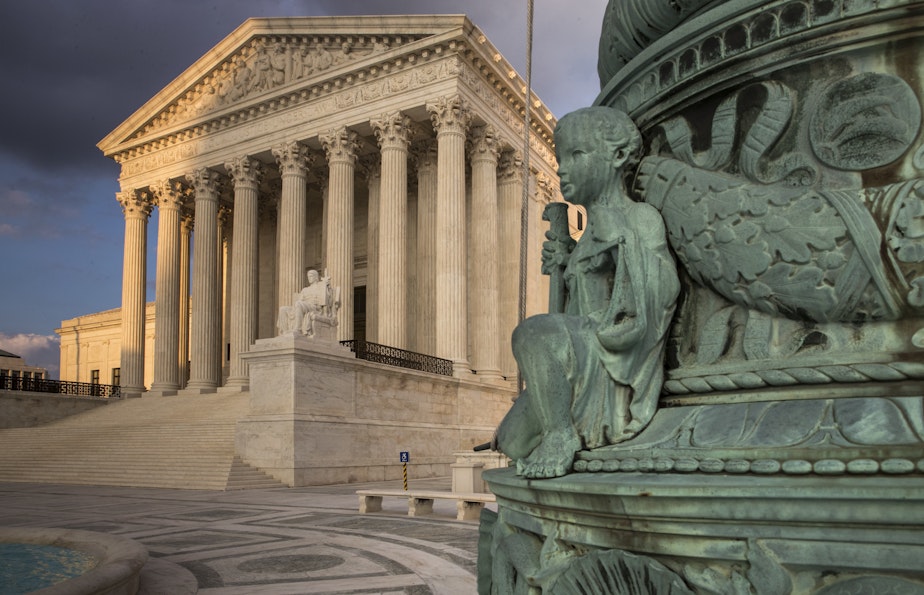Where has Seattle's tree canopy gone?: Today So Far

- People throughout Western Washington are giving up their pets, and local shelters are running out of room.
- As costs of living get tighter, expanded SNAP benefits come to an end.
- Think of an area the size of Seattle's Green Lake Park. That's roughly the space of tree canopy that Seattle lost.
This post originally appeared in KUOW's Today So Far newsletter for March 1, 2023.
Happy February 29! Just kidding. That joke is probably on par with saying, "See you next year" on Dec. 31, but sometimes I can't resist, and you have to suffer.
People throughout Western Washington are giving up their pets, and local shelters are running out of room. Seattle Humane Society expected to receive nearly 4,500 animals so far in 2023, but instead, it has taken in about 7,000.
"On average we'll have 100 requests in our inbox and we're receiving about 50 voicemails a day,” Jess Charlton, intake manager at Seattle Humane, told KUOW about the trend of pet surrenders.
The trend is an indication of economic strains elsewhere in society. The price of pet food is up, for example. Other situations have emerged over recent months, such as cutting costs to accommodate rises in rent, or moving in with relatives where their pet can't come along.
"No one's here because they want to,” Charlton said. “Honestly, often we hear it's like the saddest day of their life and so we hold a lot of space for grief and trauma that's occurring for that person and the pet."
If you've ever thought about fostering a pet, or adopting one yourself, now would be a good time to act. Read the full story here.
As such costs of living get tighter, expanded SNAP benefits have come to an end as of today.
SNAP is a federal program that helps provide food to families in need. Amid the pandemic, families received an extra $95 each month to buy food. Recent surveys from UW and WSU indicate that food insecurity is persisting in Washington state. SNAP and food banks are most often used to mitigate that issue.
“It’s not a time to cut back investments,” said Sen. Patty Murray on a recent trip to Food Lifeline’s warehouse in Seattle’s South Park. “It’s actually a time to make sure we are doing what we need for the future and investing more.”
The end of expanded SNAP benefits is the latest impact as pandemic-era measures fade away. In October, many of Washington state's pandemic safety nets were phased out. Food banks began bracing for increased demand back then. Read more here.
Think of an area the size of Seattle's Green Lake Park. That's roughly the space of tree canopy that Seattle lost between 2016 and 2021, according to a recent report from the city. Most of this disappearance has come from aging and dying trees. Apparently, we haven't been quick to replace them.
As KUOW's John Ryan points out, Seattle has a goal of 30% tree cover, equally throughout the city. Currently, it's at about 28%, but that is not spread evenly across the city. Poorer neighborhoods are often less covered. Read more here.
I got to say: Only 30%? I feel like we can do better than that. I've walked a few neighborhoods in Seattle. Some feel a bit different than others, and trees are a big part of that. Taking a big walk through Seattle can be a lot like walking across a map of Westeros in "Game of Thrones." Clearly, downtown is Kings Landing. Parts of Rainier Valley, SoDo, and Georgetown can feel like walking through the deserts of Dorne. Up north in Phinney Ridge or Ravenna, it's like the tree-lined lands of Winterfell. There's actually neighborhood called "Greenwood" in this area. And while I'm at it, Northgate is obviously Castle Black, and Snohomish County is everything north of The Wall.
Trees in a neighborhood have an impact. During recent heat waves, there were noticeable temperature differences across the city. As KUOW reported in 2021, there can sometimes be a 20 degree difference between Seattle neighborhoods on hot days. Those temperature differences line up with the above mentioned regional differences. Trees could certainly help narrow that gap.
AS SEEN ON KUOW

Construction work on a bypass channel for the 1903 Electron Dam on the Puyallup River in summer 2020. The head of hydropower company Electron Hydro has pleaded guilty after putting two football fields’ worth of artificial turf in the Puyallup River in Pierce County. That toxic material broke off and was sent downstream, as far as Commencement Bay in Tacoma. The Attorney General's Office is pushing for a $1 million penalty, which could be the largest such fine for an environmental crime in state history. (Washington Department of Ecology)
DID YOU KNOW?
"MacGyver" is in the dictionary. Yep. The iconic 1980s TV character has made it into the Merriam-Webster Dictionary, which was updated in September 2022 with 370 new words. MacGyver means "to make, form, or repair (something) with what is conveniently on hand." This is not the only new term on the block as multiple dictionaries have made updates in recent months.
Merriam-Webster also added "adorkable" (socially awkward or quirky in a way that is endearing), "Galentine's Day" (a holiday observed on February 13th as a time to celebrate friendships especially among women), and "virtue signal" (the act or practice of conspicuously displaying one's awareness of and attentiveness to political issues, matters of social and racial justice, etc., especially instead of taking effective action). There were also some updates to pandemic-era words like "booster dose" and "subvariant." And "LARP," the abbreviation for "live action role play" also made it in.
As of this week, Dictionary.com has updated its own lexicon with revised definitions for 1,140 terms and 130 entirely new definitions. Dictionary.com is the online version of the Random House Unabridged Dictionary.
"Petfluencer" (a person who gains a large following on social media by posting entertaining images or videos of their cat, dog, or other pet) is now included. "Cakeage" is the fee a restaurant charges you if you want to bring your own cake for an event. A "digital nomad" is "a person who works remotely while traveling for leisure, especially when having no fixed, permanent address."
Also, "rage farming," which is "the tactic of intentionally provoking political opponents, typically by posting inflammatory content on social media, in order to elicit angry responses and thus high engagement or widespread exposure for the original poster."
ALSO ON OUR MINDS

Conservative and liberals split at Supreme Court over Biden student loan plan
A handful of Republican-dominated states seemed on the verge of invalidating President Biden's student loan forgiveness plan at the Supreme Court on Tuesday, with a majority of the court's conservatives indicating great skepticism.

